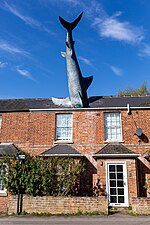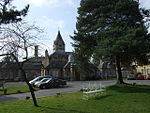Old Road Campus
English medical researchOxfordshire geography stubsUniversity of Oxford sitesYear of establishment missing

The Old Road Campus is a University of Oxford site south of Old Road, in Headington, east Oxford, England. The Churchill Hospital, a teaching hospital managed by the Oxford University Hospitals NHS Foundation Trust, is to the south.
Excerpt from the Wikipedia article Old Road Campus (License: CC BY-SA 3.0, Authors, Images).Old Road Campus
Roosevelt Drive, Oxford Headington
Geographical coordinates (GPS) Address Nearby Places Show on map
Geographical coordinates (GPS)
| Latitude | Longitude |
|---|---|
| N 51.75253 ° | E -1.215219 ° |
Address
Big Data Institute
Roosevelt Drive
OX3 7LF Oxford, Headington
England, United Kingdom
Open on Google Maps







